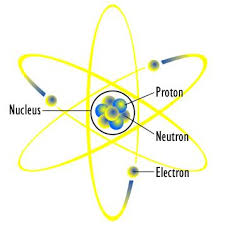Right from its inception, DAE has driven a multi-faceted programme to realise the many benefits of nuclear energy, touching every Indian directly or indirectly in daily life. With its formidable scientific and technological prowess, the Department has grown from strength to strength over the years, and so has the nation along with it. This is a unique organisation that has not only been serving the grassroots of the society, but has also engendered and fostered scientific advancement, while inspiring generations of scientists and academicians, and thus strengthening the roots of the tree of science in India and helping it flourish.
Nuclear technology has transformed fields such as agriculture, medicine, industrial processes, scientific research, and space applications, to name a few. The amazing thing about nuclear technology is that the same energy from the atom that drives a nuclear-powered submarine also gently powers the pacemaker of a heart patient. Industries depend on several radiation technologies, while researchers employ radioisotopes in cutting-edge research in biomedical, chemical and several other domains of science. The contribution of nuclear technology is so extensive that every citizen is touched by it in daily life.
Generating electricity using nuclear energy is a proven way of clean power generation in the country, with round-the-clock (24x7) power. This offers clean, green and emissions-free electricity for the nation’s progress. Nuclear power plants generate environment-friendly electricity globally in almost 30 countries. Starting with India’s first two commercial nuclear power plants at Tarapur in 1969, the nation today has 22 nuclear power reactor units at 7 nuclear power plant sites. Eighteen of these reactors are Pressurised Heavy Water Reactors (PHWRs). India has mastered the PHWR technology and developed comprehensive capabilities in all the related technologies – from mining and fuel fabrication, to designing, constructing and operating nuclear power plants indigenously. In addition to setting up indigenous PHWRs, we have also established international cooperation on nuclear power generation to deploy Pressurised Water Reactors (PWR) as an additionality to the very own indigenous nuclear power programme. This not only expands our capabilities further, but also speeds up power generation in the country using a diverse route.
We are also on the verge of realising another dream in the arena of nuclear power technology. The work on India’s first prototype fast breeder reactor (PFBR) at Kalpakkam in Tamil Nadu is approaching finality and the reactor is slated to be unveiled soon. This is the stepping stone for entering the second stage of India’s long-term three-stage nuclear power programme formulated by Dr. Bhabha. Moving forward, over the next few decades, a growing fleet of second-stage fast breeder reactors will pave the way for unleashing the third stage of the programme, which will multiply the fissile fuel inventory using ‘breeding’ of fuel – a process in which more fissile nuclear fuel is generated from fertile nuclear material. This transitional phase will eventually usher India into an age of thorium-based nuclear power reactors. The vast proven resource base of thorium mineral deposits in the country would ensure sustained large-scale thorium utilisation and commensurate nuclear power generation, providing vital energy security for the country for several centuries.
Nuclear energy also provides immense benefits to the society by way of life-saving health care. Nuclear medicine treats cancer and saves lives. Radiological medicine is central to the diagnosis and treatment of malignancy. Radiation therapy, coupled with chemotherapy, is a proven frontline treatment option for cancer and it is used routinely across the nation to provide affordable and effective treatment for cancer. Bhabhatron, a completely indigenous cancer therapy machine, is one of the many success stories and a pride of the nation. What’s more, we are also helping other countries to reap benefits of the power of the atom in peaceful pursuits. In this quest, we have also provided Bhabhatron machines to other countries.
Nuclear technology benefits our villages as much as cities. To help farmers, the organisation has developed many improved crop varieties, including items of daily consumption, such as rice, pulses and legumes, bananas, etc. Enhanced crop varieties have improved draught resistance, strengthened resistance against disease and pests, and yielded higher nutritional value. Further, through food irradiation technology with gamma rays, there is delay in sprouting of crops such as potatoes and onions, thus prolonging their shelf life, while the process also kills microbes, thereby substantially reducing food spoilage. Irradiation technology not only helps consumers, but also enables higher incomes for farmers.
Nuclear technology can provide vital relief in water shortage. Nuclear power plants can provide drinking water derived from saline water to neighbouring communities. The waste heat from the power plant is used to distill saline water, converting it into potable water. Nuclear power plants can provide their adjoining communities with drinking water in this manner, thus addressing a vital daily issue for many. At Kalpakkam, DAE has the world’s largest desalination facility. It has also developed several low-cost water purification technologies, for both domestic and community use. The benefit could thus be extended to many more people. Also, it has successfully traced groundwater and made it available for irrigation, employing special nuclear material and techniques.
Nuclear energy is also benefiting fields like biotechnology. One of the ways this high-technology domain helps communities is by providing an effective way of tackling urban waste. Daily municipal waste is largely organic waste, which is rich in constituents that are suitable for generation of biofuels. With the help of this, a novel method has been developed for fermenting organic waste, using specially modified microbes that digest the organic waste and release methane. This way of producing biogas is an example of appropriate technology for our country. This not only helps generate biofuel but also enhances rural income. This cleaner gas is a friendly alternative for cooking and it is practical also for other applications. The Department has also developed a sewage sludge hygienisation technology. The sludge is irradiated with high-intensity gamma rays to kill harmful microorganisms. Thereafter, a helpful variety of bacteria is introduced in the sludge mass. The hygienised sludge can then be used as fertiliser. Earlier this year, Ahmedabad Municipal Corporation started using this technology to hygienise about 100 tons of dry sludge per day, while Vadodara Municipal Corporation has been using a sewage sludge hygienisation plant for several years.
Thus, the mission is to bring the benefits of nuclear energy and other domains of science and technology to the citizens, serving the society in countless ways and touching the lives of all of us – surely, safely and silently.
Wednesday, September 16, 2020




